Proteomics for fully informed genomics analysis
See why the SomaScan Platform is the technology to make new discoveries a reality.
Proteomic and genomic data integration unlock MORE
Discover the secrets of biology and human health with a proteogenomic approach
More and more, researchers and drug developers are combining genomics with proteomics to unravel deeper human health mysteries. In cancer, for example, genetic variations can complicate disease understanding and slow the development of effective therapeutic strategies.
Through a multi-omic approach, scientists overcome these challenges – and can confidently identify putative causal factors for disease, discover and prioritize drug targets and explore gene-to-phenotype and protein-to-phenotype relationships.
The proof comes from an increasing amount of published research that demonstrates the potential of an integrated proteomic and genomic approach. Here’s just one example of the utility of incorporating Mendelian randomization proteomics to identify promising causal pathways and drug targets for heart failure.
Why a pan-omic approach?
By fusing whole genome sequencing (WGS) and other genomic data with high-plex proteomic analysis, you can:
- Create a comprehensive view of biological systems
- Better understand disease origins
- Discover the impact of genetic variations on human health
- Understand why existing therapies fail
- Identify new, relevant drug and therapy targets
- Develop safer, more effective treatments
- And more!
New to proteomics?
Here’s why proteins are such a powerful complement to genomics.
Proteins are dynamic
Unlike the genome, which is relatively fixed over time, proteins provide a snapshot of health in real time.
Proteins are accessible
Secreted proteins circulate in blood and other fluids, making them easy to collect and analyze.
Proteins are the future
Our pioneering SomaScan® Platform enables 11,000 protein measurements from a single sample.
One platform for discovery, validation and development
The most comprehensive content for biomarker discovery
In the past, measuring proteins has been quite challenging. With no reliable technique for large-scale, multiplexed protein characterization, researchers looked to the genome for answers regarding disease diagnosis, prognosis and therapy.
Today, emerging high-throughput proteomic approaches are moving research forward with speed and accuracy comparable to next-generation sequencing (NGS)-based research. Some proteomic approaches, like mass spectrometry, are popular but present challenges when trying to achieve the sensitivity and specificity crucial to discovery.
SomaScan Technology addresses these challenges by offering an unparalleled ability to measure thousands of proteins simultaneously with exceptional accuracy. Its unique affinity platform provides high sensitivity, allowing for the detection of low-abundance proteins that may be critical in understanding disease mechanisms. This comprehensive profiling enables researchers to uncover novel biomarkers and gain insights into complex biological processes, making the SomaScan Assay an invaluable tool for proteogenomic research. By integrating protein data with genomic information, SomaScan Technology facilitates a more holistic view of health and disease, empowering scientists explore new treatment options and enhance disease diagnostics.
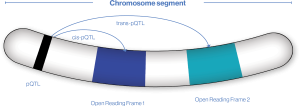
Published research confirms that our platform provides the most insight for the most pQTLs – the missing link between genes and disease.
Get the white paper
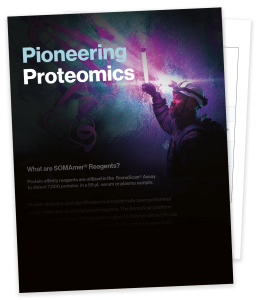
Traditionally, affinity-based platforms have used antibodies as reagents. But antibodies present performance issues and natural variability in structure.
Our synthetic SOMAmer® (Slow Off-rate Modified Aptamer) Reagents overcome these challenges and offer the flexibility necessary to add targets quickly and accurately.
That means you get broad, deep coverage – half the genetically encoded human proteome – on a scalable platform. Learn how we make that possible in this comparison of antibodies vs. aptamers.
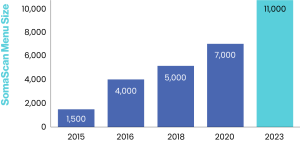
As the menu expands, we continue to invest heavily in maintaining the reliability and accuracy our customers depend on. Gain targeted insights and make better decisions by profiling 11,000 protein measurements from a 55-μL sample.
See the menu
Our technology boasts >800 peer-reviewed publications, >1,000 issued and pending patents, and >3 billion proteomic measurements and counting.
See how SOMAmer® (Slow Off-rate Modified Aptamer) Reagents address the challenges of traditional polyclonal antibodies in this video.
The SomaScan Portfolio
SomaScan Assay Services
With the ability to profile 11,000 proteins simultaneously in samples such as blood, urine and cerebrospinal fluid, the SomaScan Assay lets you measure low- and high-abundant proteins with confidence.
SomaScan Panels
Choose your proteins of interest, and customize a panel. Or select from one of our carefully curated disease-specific panels, including neuroscience, cardiovascular disease, cytokines and more.
SomaSignal® Tests
Identify patterns of protein changes in 21 quantitative clinical metrics from a simple blood test. Report current health state, and understand risks for cardiovascular disease, NASH, diabetes and more.
DataDelveTM Statistics
Get the most out of your data with this new data visualization tool. With it, it’s easy to combine information from the SomaScan Platform with clinical data to perform custom analysis.
The only precise proteomic tool
![]()
High-plex,
high-throughput
With the SomaScan Platform, you can profile 11,000 total protein measurements from a 55-µL sample. Dig deeper with broad coverage of the human proteome. Download the SomaScan 11K Assay v5.0 Tech Note to learn more.
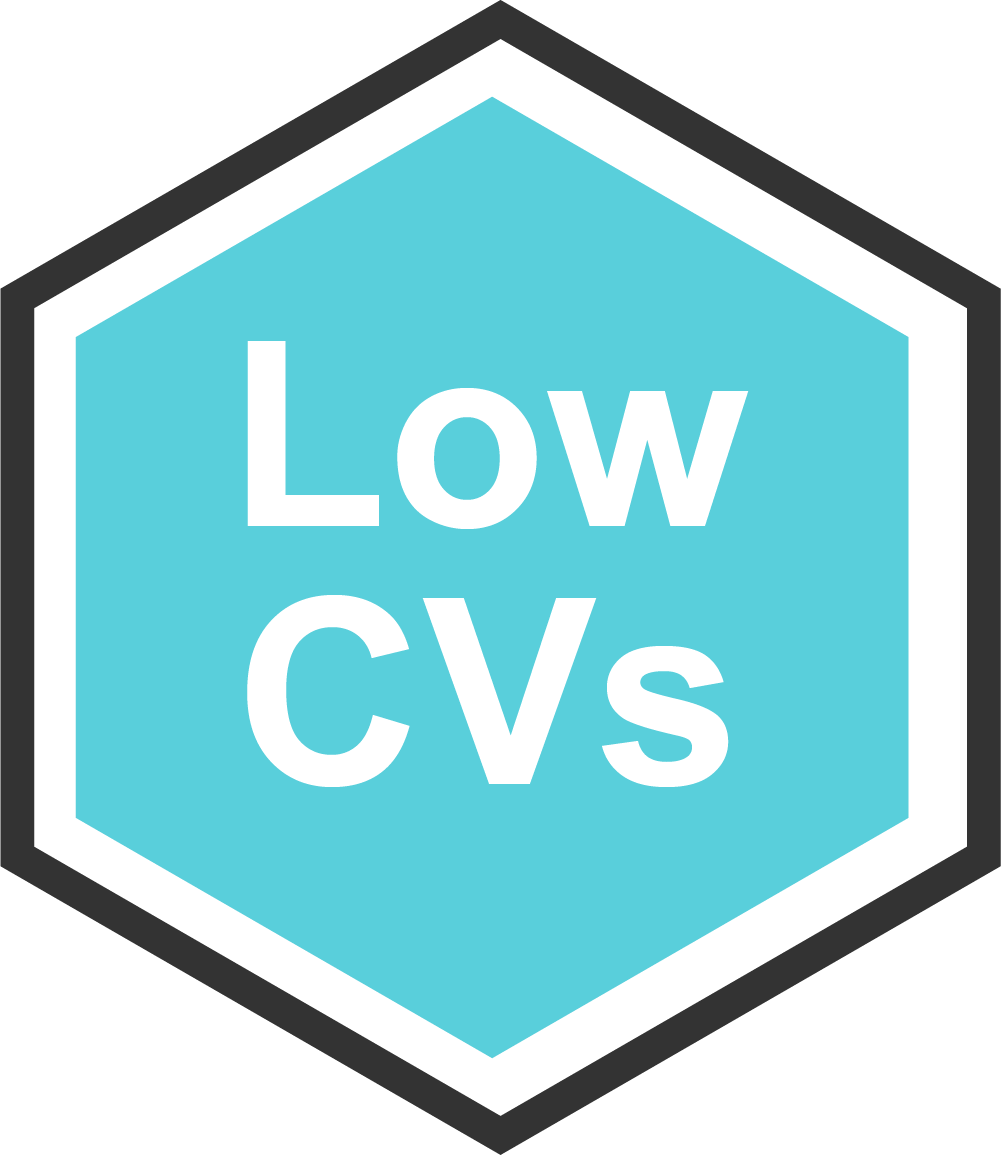
Reproducible precision
Be confident in the accuracy of your data with the high reproducibility that comes from low coefficients of variation (~5%) – even if you have a limited number of samples. Read why low CVs are critical in this white paper.
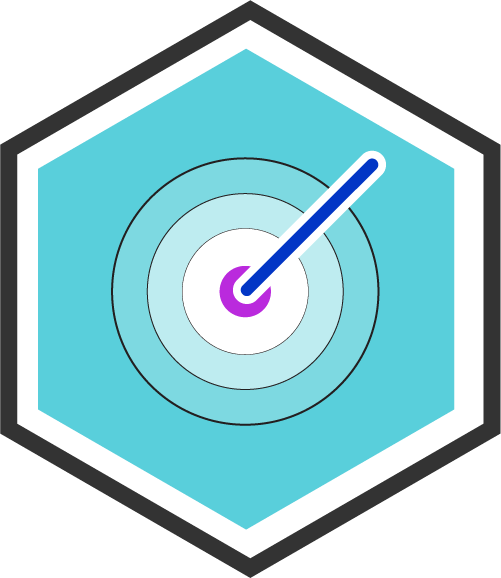
Targeted
analysis
Whether you want to measure the entire menu, choose a panel curated by our scientists, or select only certain proteins you’re interested in, you have the flexibility you need. Learn about our curated SomaScan Panels here.
Can you trust your proteomic data?
Learn why the SomaScan Assay is the only proteomic approach that scales with precision.
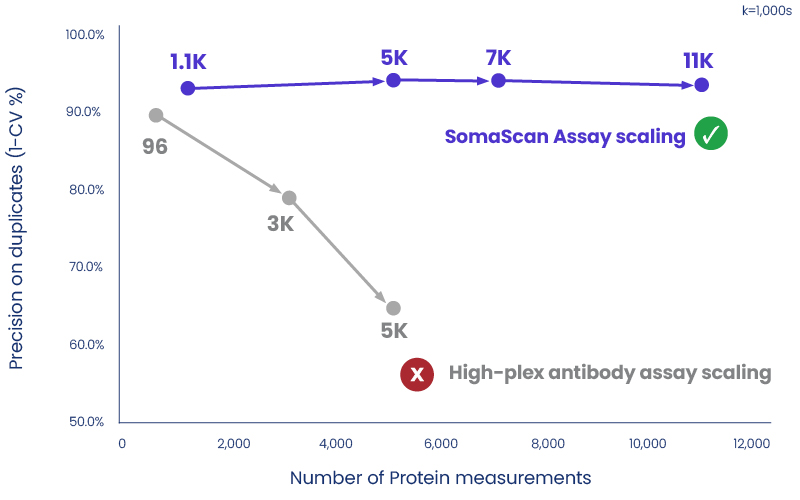
* Source: Rooney, M.R. et al. “Plasma proteomic comparisons change as coverage expands for SomaLogic and Olink.” medRxiv (2024): doi:10.1101/2024.07.11.24310161.
But don’t just take our word for it
Hear how Washington University in St. Louis uses a multiomic approach at its genomics core facility for greater efficiency and deeper insights.
Published peer-reviewed research shows more benefits of a multiomic approach
Published research across multiple areas of human health and disease states provides proof that a panomic approach accelerates confirmation, validation, and discovery.
Join our mailing list
Want to stay updated on the latest proteomics research, technology, and learning opportunities?





